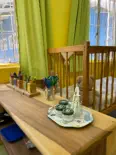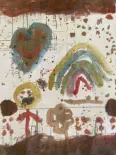NEDBANK NAMIBIA · ACCOUNT NO. 11990522989 · BRANCH CODE 461-038 · SWIFT CODE NEDSNANX

The Six Principles of the Montessori Prepared Environment
Maria
Montessori’s
idea
of
the
prepared
environment
was
that
everything
the
child
came
in
contact
with
would
facilitate
and
maximize
independent
learning
and
exploration.
This
calm,
well-ordered
environment
has
a
lot
of
movement
and
activity.
Children
are
free
to
choose
and
work
on
activities
at
their
own
pace.
Here,
they
experience
a
combination
of
freedom
and
self-discipline,
as
guided
by
the
environment.
There
are
generally
six
aspects,
or
principles,
to
the
Prepared Environment:
Freedom, Structure and Order, Beauty,
Nature and Reality, Social Environment,
and Intellectual Environment.
Learn
more
about
each
of
these
aspects,
and
why
the
prepared
environment
is
so
important
to
the
success
a
child
experiences with Montessori education!
1. Freedom
Montessori
believed
that
a
child
must
be
free
to
explore
and
follow
his
own
natural
impulses,
thus
developing
his
potential
and
increasing
his
knowledge
of
the
world
around
him.
Within
the
prepared
environment,
the
child
must
experience
freedom
of
movement,
freedom
of
exploration,
freedom
to
interact
socially,
and
freedom
from
interference
from
others.
This
freedom
ultimately
leads
to
a
greater
freedom: freedom of choice.
2. Structure and Order
While
Structure
and
Order
seem
counter-intuitive
to
the
aforementioned
freedom,
nothing
could
be
further
from
the
truth.
Structure
and
Order
in
the
Montessori
classroom
accurately
reflect
the
sense
of
structure
and
order
in
the
universe.
By
using
the
Montessori
classroom
environment
as
a
microcosm
of
the
universe,
the
child
begins
to
internalize
the
order
surrounding
him,
thus
making
sense
of
the
world
in
which
he
lives.
Montessori
stated
that
there
is
a
sensitive
period
for
order, which occurs between the ages of 1 and 3 years of age.
This
is
when
the
child
begins
to
draw
conclusions
of
the
world
around
him.
If
there
is
not
order
to
his
environment,
the
child’s
sense
of
reason
may
be
off,
since
he
will
not
be
able
to
validate
his
findings.
This
is
not
to
say
that
routines
or
classroom
set-up
or
ways
of
doing
things
can’t
change.
However,
it
does
mean
that
change
should
be
carefully
considered.
Is
this
change
for
the
good
of
the
children?
If
so,
it
should
be
done
carefully
and
its
after-effects should be observed to ensure that it is of benefit to the children.
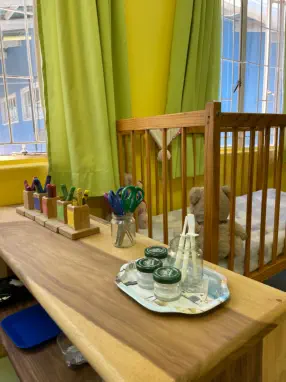
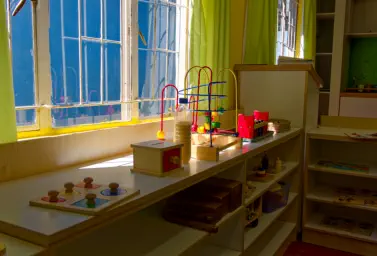
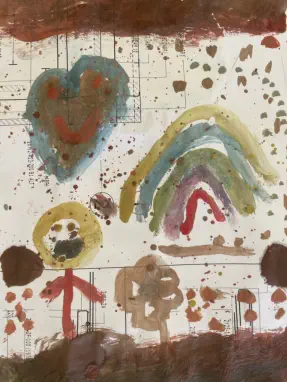
NEDBANK NAMIBIA · ACCOUNT NO. 11990522989 · BRANCH CODE 461-038 · SWIFT CODE NEDSNANX

The Six Principles of the Montessori Prepared Environment
Maria
Montessori’s
idea
of
the
prepared
environment
was
that
everything
the
child
came
in
contact
with
would
facilitate
and
maximize
independent
learning
and
exploration.
This
calm,
well-ordered
environment
has
a
lot
of
movement
and
activity.
Children
are
free
to
choose
and
work
on
activities
at
their
own
pace.
Here,
they
experience
a
combination
of
freedom
and
self-discipline,
as
guided
by
the
environment.
There
are
generally
six
aspects,
or
principles,
to
the
Prepared Environment:
Freedom, Structure and Order, Beauty,
Nature and Reality, Social Environment,
and Intellectual Environment.
Learn
more
about
each
of
these
aspects,
and
why
the
prepared
environment
is
so
important
to
the
success
a
child
experiences
with
Montessori education!
1. Freedom
Montessori
believed
that
a
child
must
be
free
to
explore
and
follow
his
own
natural
impulses,
thus
developing
his
potential
and
increasing
his
knowledge
of
the
world
around
him.
Within
the
prepared
environment,
the
child
must
experience
freedom
of
movement,
freedom
of
exploration,
freedom
to
interact
socially,
and
freedom
from
interference
from
others.
This
freedom
ultimately
leads
to
a
greater
freedom: freedom of choice.
2. Structure and Order
While
Structure
and
Order
seem
counter-intuitive
to
the
aforementioned
freedom,
nothing
could
be
further
from
the
truth.
Structure
and
Order
in
the
Montessori
classroom
accurately
reflect
the
sense
of
structure
and
order
in the universe.
By
using
the
Montessori
classroom
environment
as
a
microcosm
of
the
universe,
the
child
begins
to
internalize
the
order
surrounding
him,
thus
making
sense
of
the
world
in
which
he
lives.
Montessori
stated
that
there
is
a
sensitive
period
for
order,
which
occurs
between
the
ages
of
1
and
3
years of age.
This
is
when
the
child
begins
to
draw
conclusions
of
the
world
around
him.
If
there
is
not
order
to
his
environment,
the
child’s
sense
of
reason
may
be
off,
since
he
will
not
be
able
to
validate
his
findings.
This
is
not
to
say
that
routines
or
classroom
set-up
or
ways
of
doing
things
can’t
change.
However,
it
does
mean
that
change
should
be
carefully
considered.
Is
this
change
for
the
good
of
the
children?
If
so,
it
should
be
done carefully and its after-effects should be observed to ensure that it is of benefit to the children.
